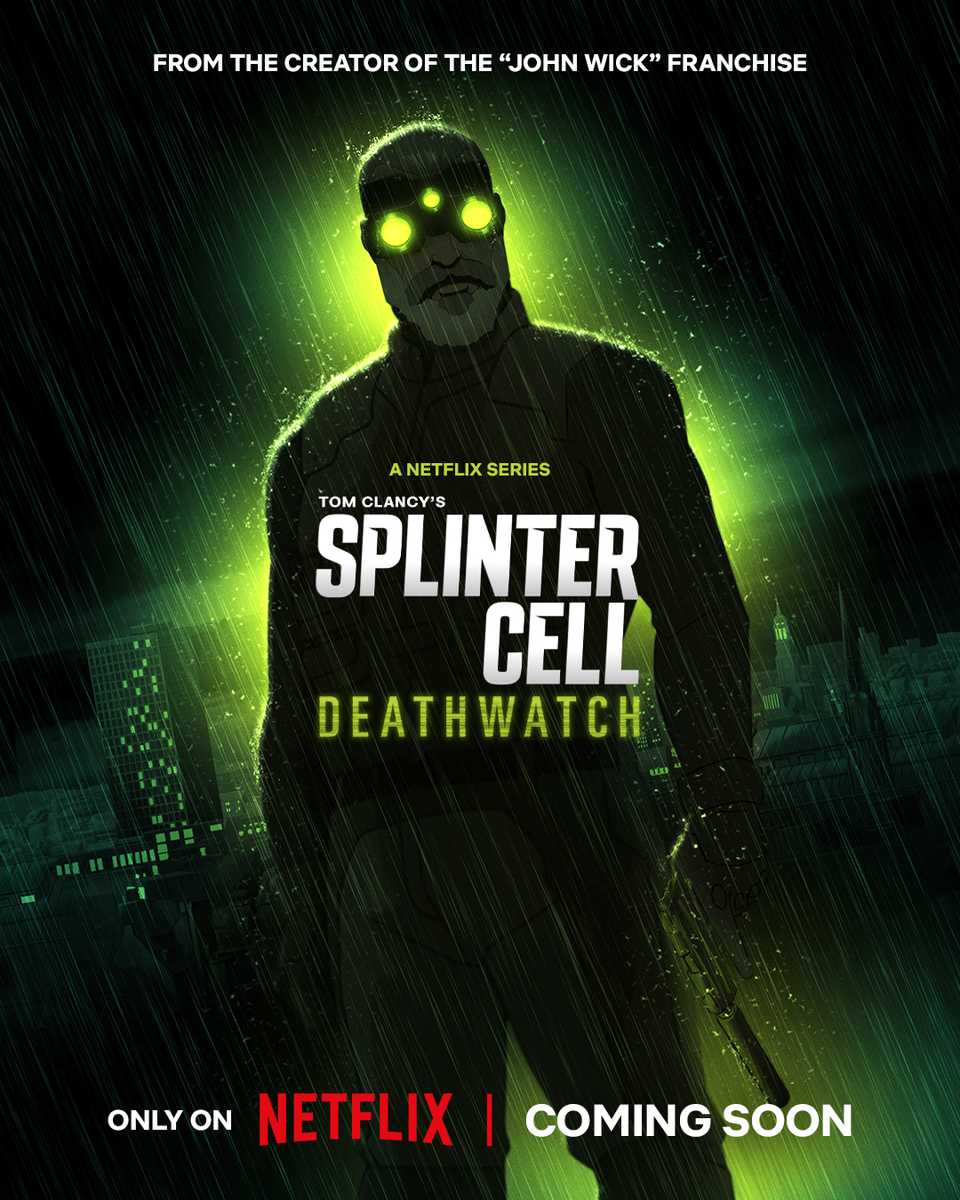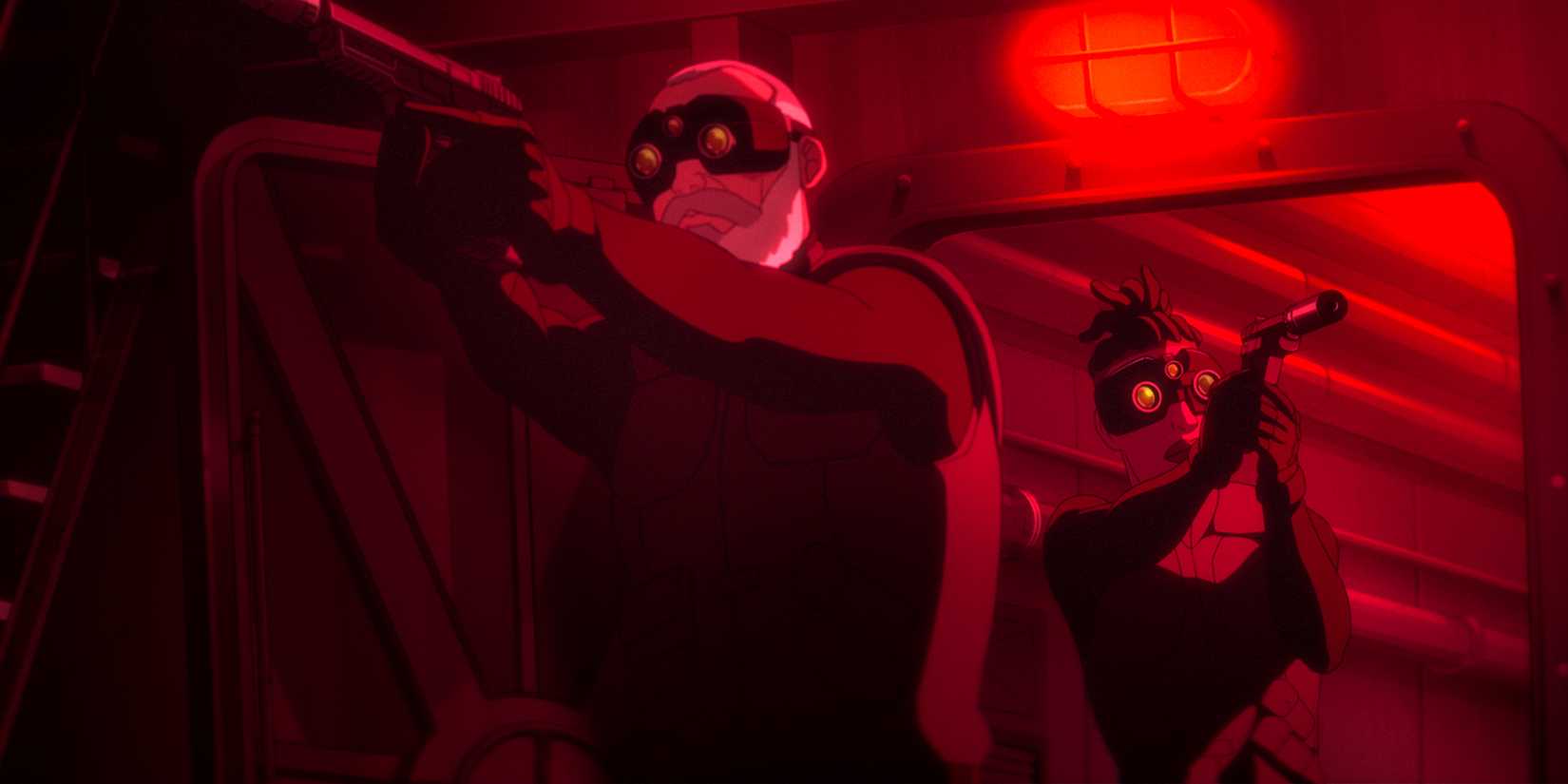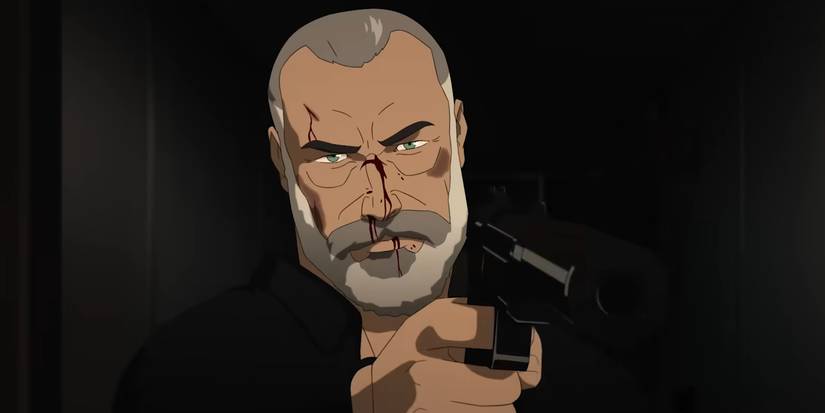Warning: This article contains SPOILERS for Splinter Cell: Deathwatch season 1.Netflix’s Splinter Cell: Deathwatch breathed new life into the iconic video game franchise as the TV adaptation provided a fresh look at Sam Fisher while providing a unique insight into his backstory. As expected, the animated project featured some familiar faces from the gaming series, most notably Sam and Grim, who embarked on a new mission centered around Agent Zinnia McKenna.
McKenna’s initial goal to extract a valuable asset unfortunately went south, prompting Sam to get involved, with the two covert agents working alongside Grim, Thunder, and Jo. After fighting through numerous enemies and eventually uncovering the truth about Diana Shetland’s deadly plan, Sam and McKenna attempted to stop the villain’s gas-filled ship that was being used to cause an energy crisis.
Interestingly, Splinter Cell: Deathwatch explored Diana and Douglas Shetland’s backstory to add a layer of sympathy to the controversial family, setting up a high-stakes ending. However, despite Sam and McKenna seeming to stop the boat initially, an overlooked adversary caused all hell to break loose, creating a shocking ending to the first season.
Sam & McKenna Survive Splinter Cell: Deathwatch At The Expense Of Their Mission
Given that Splinter Cell: Deathwatch is mostly canon to the game series, it would’ve been very bold for the show to kill off such a popular character, making it no surprise Sam Fisher survived alongside Zinnia McKenna. Unfortunately, their escape came at the expense of their mission, as the two failed to stop the rigged boat from reaching its destination.
Despite taking down countless dangerous foes throughout the series, the Splinter Cell agents still had to deal with Freya on board The Lazarev. As Sam realized the engine room was sabotaged, McKenna attempted to plant Thunder’s bug that was designed to stop the ship, only to be confronted by Freya, who instantly started attacking.
McKenna seemed to win the fight, only for Freya to drop a grenade with the intention of killing them both. Miraculously, McKenna survived, but despite her and Sam believing they’d thwarted any danger, the boat’s controls had already been hacked prior to their arrival by Diana’s half-brother, Charlie.
Rather than steering the ship to its original destination, Charlie diverts its course towards Diana’s summit, as he believes taking out his sister alongside a plethora of wealthy, powerful figures would give him ultimate control over his family’s company, with Europe subsequently relying on him for energy.
While there was no escape for Diana and her guests, Sam and McKenna managed to flee the ship before its collision, creating a bittersweet ending. Even without Michael Ironside voicing Sam Fisher in Splinter Cell: Deathwatch, Liev Schreiber successfully captured the character’s pragmatic despair as he desperately looked for a solution in those moments before disaster.
Unfortunately, the protagonists could do nothing to stop Charlie’s plan, but they at least escaped with their lives, which on its own isn’t enough for Sam. He may have been unable to stop the fatal explosion, but he did appear to get some sort of justice in the show’s final scene.
What Happened To Charlie After Betraying Diana Shetland
It’s hard to argue that Charlie’s decision to betray Diana was shocking, but the way in which he did so was certainly a surprise. Inevitably, such a world-changing event was always going to have ramifications, and while the public may not know he was responsible for so many deaths, Sam Fisher certainly did.
This didn’t seem to register with the villain though, who enjoyed a drink and listened to music in his new office while celebrating the success of his sinister scheme. However, just as he took a sip, the lights went off, and his vinyl stopped spinning, causing Charlie to slowly become more uncomfortable as he called out for his assistant.
Finally realizing something was off, he asked, “Is someone there?” only to be met with complete silence before the familiar sound of night vision goggles powering up could be heard as Sam appeared on-screen. Season 1’s very last line comes from Charlie, who says, “Wait. No. Please don’t,” while Sam aims his silenced pistol at the antagonist.
The screen then fades to black before a few shots can be heard, indicating that Splinter Cell‘s protagonist brought down yet another threat in this fictional universe. While the lack of visual confirmation could theoretically mean Charlie somehow survived ahead of Splinter Cell season 2’s story, the fade to black felt more stylistic than suspenseful.
If viewers didn’t already know how lethal Sam was before watching the show, they certainly should have by episode 8, suggesting he definitely hit those shots. Therefore, betraying his sister may have led to short-term power for Charlie, but it also gave Sam the perfect excuse to execute him, which brings a definitive end to the Shetland family’s story.
Why Charlie Sold Out Diana In “Chaos Theory: Part 2”
Charlie’s decision to sacrifice his half-sister came down to two simple things: money and power. It was clear from early on that while Diana claimed to care about Charlie, she only wanted him involved in the company to further her own means, as she constantly tried to keep him on the outside.
While she wanted him to participate in public appearances, Diana had her own clear vision for the business’ future, and it certainly didn’t revolve around her family. As a result, Charlie adopted his own goals, quietly working against his unaware sister so that he could carry on Douglas’ legacy and have a huge amount of influence over Europe.
Diana was after the exact same thing, hence why she was also willing to let innocent people suffer for her own gain, but she didn’t have the foresight to anticipate her own family selling her out. Her death was also likely used to make Charlie look innocent, which explains why he described his half-sister as his Phoenix.
He alluded to the fact that Diana’s ashes would help forge his own legacy, making it clear that sacrificing her wasn’t particularly personal, but it was essential to gain power, at least in his mind.
Throughout the series, it was hard to tell what Charlie’s true feelings about Diana were, but given that he emphasized that she was only his “half” sister, it felt like their relationship was one of convenience, rather than two siblings who truly loved one another, hence why he was so comfortable letting her die.
How Splinter Cell’s Ending Sets Up Season 2
All the main villains may have died during season 1, but there was still some story set-up ahead of season 2 after The Lazarev’s high-profile crash. Charlie may not be alive to capitalize on Europe’s ongoing crisis, but there will undoubtedly be someone who swoops in and uses this catastrophic event to their advantage.
As is often the case in the Splinter Cell universe, whatever organization steps up is bound to be filled with skilled marksmen and trained killers to protect their secrets. Assuming this is the case for season 2, Sam and McKenna may be forced to team up once again to prevent a new evil faction from asserting their authority over the continent.
Grim’s conversation with the President could also lead to the Splinter Cell program being defunded or shut down permanently, which would force the central characters to operate outside the law and without the same tech they usually rely on.
Thankfully, season 1’s ending didn’t feel incomplete by simply setting up a second outing, but it did leave room for the next chapter without giving everything away. Still, with Splinter Cell: Deathwatch being ordered for two seasons, the fallout of Charlie and Diana’s attack is destined to have major ramifications on whatever comes next for this gripping animated series.
What Splinter Cell: Deathwatch Season 1’s Ending Really Means
Although a lot of attention was given to McKenna and her personal story in Netflix’s Splinter Cell adaptation, the true ending felt like it focused on Sam and his motivations for doing what he does. When we first saw him on the show, he was relaxing peacefully at home, looking content after retiring from the field.
However, the moment trouble came to his doorstep, he was willing to help and didn’t hesitate when it came to saving McKenna. He continued to step up and participate in the mission without complaint, even taking on some covert operations by himself, showing his desire to do the right thing, which was detailed in his backstory.
Netflix decided to offer a slightly different perspective on his showdown with Douglas, providing a slight retcon while keeping a lot of the dialogue regarding their final encounter. The flashback sequences highlighted the similarities and differences between Sam and Douglas, revealing that they do what they do for the greater good, even when things seem hopeless.
Sam was well aware that even if the team did manage to stop Diana’s initial plan, there was always going to be another bad guy, but trying to save lives and take down immoral figures is the right thing to do, hence why he constantly put himself on the line throughout Splinter Cell: Deathwatch, even when the odds were against him.
All 8 episodes of Splinter Cell: Deathwatch are available to stream now on Netflix.

- Release Date
-
October 14, 2025
- Network
-
Netflix
-

Liev Schreiber
Sam Fisher (voice)
-

Kirby Howell-Baptiste
Zinnia McKenna
Source link






















Add Comment